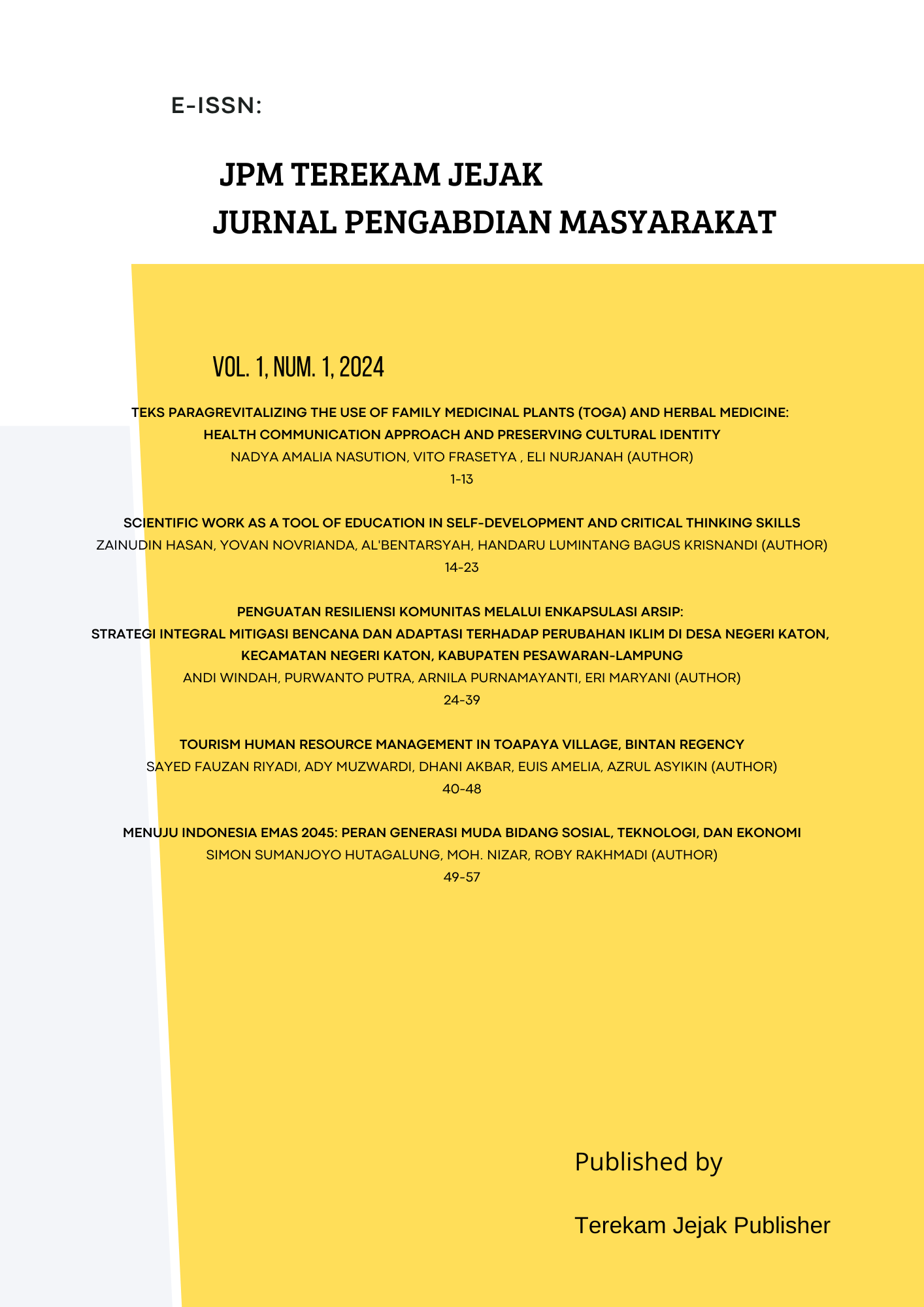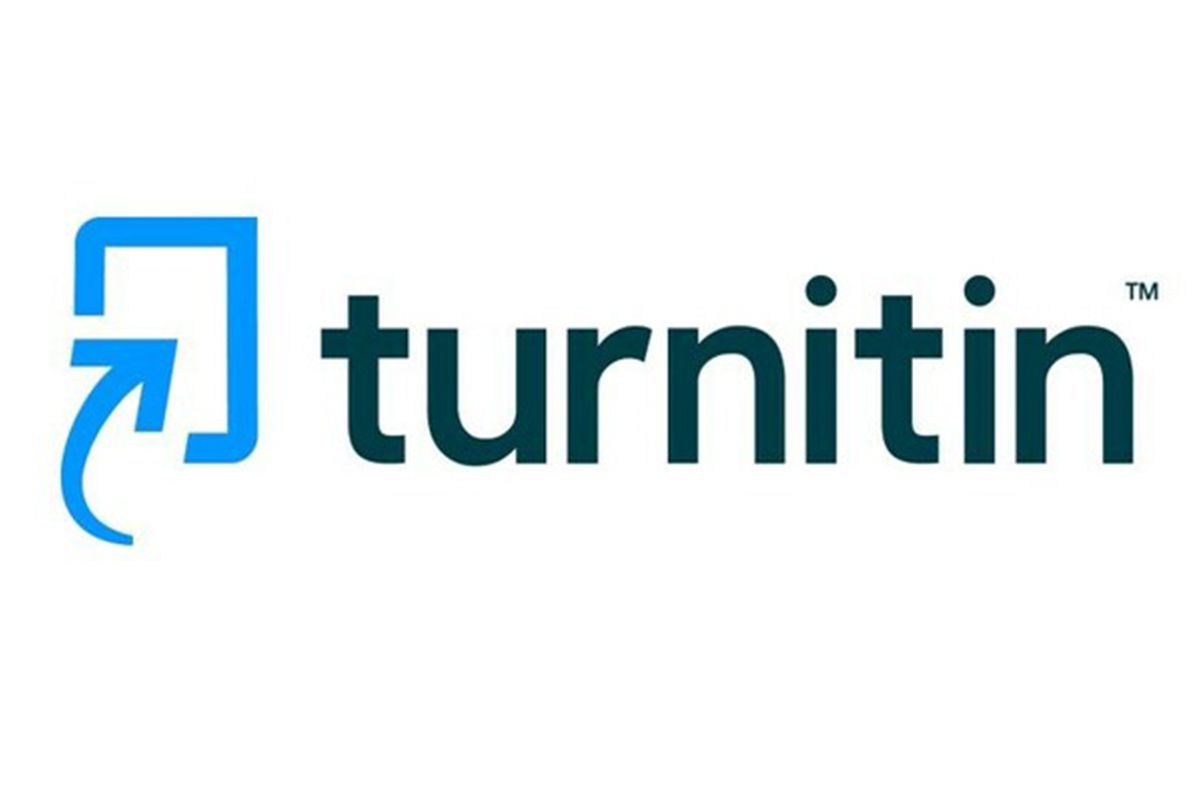Revitalizing the Use of Family Medicinal Plants (TOGA) and Herbal Medicine: Health Communication Approach and Preserving Cultural Identity
Keywords:
TOGA, herbal medicine, health communication, cultural heritage, community empowermentAbstract
This article describes the results of community service integrated with the Raden Intan Lampung State Islamic University (UIN) Real Work Lecture (KKN) program in Jati Indah Village, Tanjung Bintang, South Lampung. The service focuses on revitalizing the knowledge and use of Family Medicinal Plants (TOGA) and herbal medicine as Indonesia's cultural heritage. The methods used include observation, education, training and implementation of community-based programs. Results show significant increases in knowledge, cultural awareness, and practice of using TOGA and herbal medicine in the community. The involvement of KKN students provides added value in the form of two-way knowledge transfer and valuable experience in community service. The success of this program highlights the importance of a holistic approach in revitalizing traditional healing practices in the modern era.
References
Bennett, A., Taylor, J., & Woodward, I. (2014). The Festivalization of Culture. Ashgate Publishing, Ltd.
Dewi, N.L.P.T., Arifin, M., & Ismail S. (2019). Budaya Berdampak Pada Proses Pemulihan Pasien Pasca Stroke. Health Care Media, 3(6), 24-36.
Dutta, M. J. (2007). Communicating about culture and health: Theorizing culture‐centered and cultural sensitivity approaches. Communication Theory, 17(3), 304-328.
Elfahmi, Woerdenbag, H. J., & Kayser, O. (2014). Jamu: Indonesian traditional herbal medicine towards rational phytopharmacological use. Journal of Herbal Medicine, 4(2), 51-73.
FAO. (2020). Digital Agriculture Transformation Strategy. Food and Agriculture Organization of the United Nations.
Karo-Karo, U. (2010). Pemanfaatan Tanaman Obat Keluarga di Kelurahan Tanah 600, Medan. Kesmas: Jurnal Kesehatan Masyarakat Nasional, 4(5). https://doi.org/10.21109/kesmas.v4i5.169
Kartika, T. (2023). JAMU AS HERBAL MEDICINE: A STUDY OF HEALTH COMMUNICATION AND PHILOSOPHY AS CULTURAL IDENTITY.
Kementerian Pariwisata dan Ekonomi Kreatif RI. (2020). Laporan Kinerja Ekonomi Kreatif Indonesia 2020.
Kreuter, M. W., & McClure, S. M. (2004). The role of culture in health communication. Annu. Rev. Public Health, 25, 439-455.
Kristian, A., Sumaryono, W., Widyastuti, S. & Lesmana, H. (2019). Analisa Penerimaan Dan Strategi Pemasaran Apotek Herbal Di Kota Bekasi. Jurnal Riset Bisnis, 2(2), 95-100. https://doi.org/10.35592/jrb.v3i2.1365
Limyati, D. A., & Juniar, B. L. L. (1998). Jamu Gendong, a kind of traditional medicine in Indonesia: the microbial contamination of its raw materials and endproduct. Journal of Ethnopharmacology, 63(3), 201-208.
Nasution, N. A., Besar, I., Frasetya, V., & Samhati, S. (2023). Pemberdayaan Masyarakat Menghadapi Perkembangan Destinasi Ekowisata di Kecamatan Suoh Kabupaten Lampung Barat. Jurnal PkM (Pengabdian kepada Masyarakat), 6(4), 410-419.
Newman, S., & Hatton-Yeo, A. (2008). Intergenerational learning and the contributions of older people. Ageing horizons, 8(10), 31-39.
Pramono, E. (2002). The commercial use of traditional knowledge and medicinal plants in Indonesia. Submitted for multi-stakeholder dialoque on trade, intellectual property and biological resources in Asia, BRAC Centre for Development Management, Rajendrapur, Bangladesh.
Ramsden, I. (2002). Cultural safety and nursing education in Aotearoa and Te Waipounamu. Victoria University of Wellington.
Rangga, A., Astuti, H., User, P., Subowo, A., & Hendra, J. (2017). Identifikasi Pelaku Etnomedisin dan Informasi Jenis Tanaman Obat yang Digunakan dan Tumbuh di Provinsi Lampung. Inovasi Pembangunan: Jurnal Kelitbangan, 5(03), 228-247.
Resnicow, K., Baranowski, T., Ahluwalia, J. S., & Braithwaite, R. L. (1999). Cultural sensitivity in public health: defined and demystified. Ethnicity & disease, 9(1), 10-21.
Riset Kesehatan Dasar (Riskesdas). (2010). Badan Penelitian dan Pengembangan Kesehatan Kementerian Kesehatan RI.
Sugito, M., & Susilowati. (2017). Strategi Pemanfaatan Lahan Pekarangan Untuk Budidaya Tanaman Obat Keluarga (TOGA). Penamas Adi Buana, 2(2), 1-8.
Susanto, A. (2017). Komunikasi Dalam Sosialisasi Tanaman Obat Keluarga (Toga) Di Kecamatan Margadana. Jurnal Para Pemikir, 6(1), 111-117. https://doi.org/10.30591/PJIF.V6I1.476.G429
Torri, M. C. (2013). Knowledge and risk perceptions of traditional jamu medicine among urban consumers. European Journal of Medicinal Plants, 3(1), 25-39.
UNESCO. (2003). Convention for the safeguarding of the intangible cultural heritage. Paris: UNESCO.
WHO. (2019). WHO Guideline: Recommendations on Digital Interventions for Health System Strengthening. World Health Organization.
Downloads
Published
Issue
Section
License
Copyright (c) 2024 Jurnal Pengabdian Masyarakat (JPM) Terekam Jejak

This work is licensed under a Creative Commons Attribution-NonCommercial 4.0 International License.





